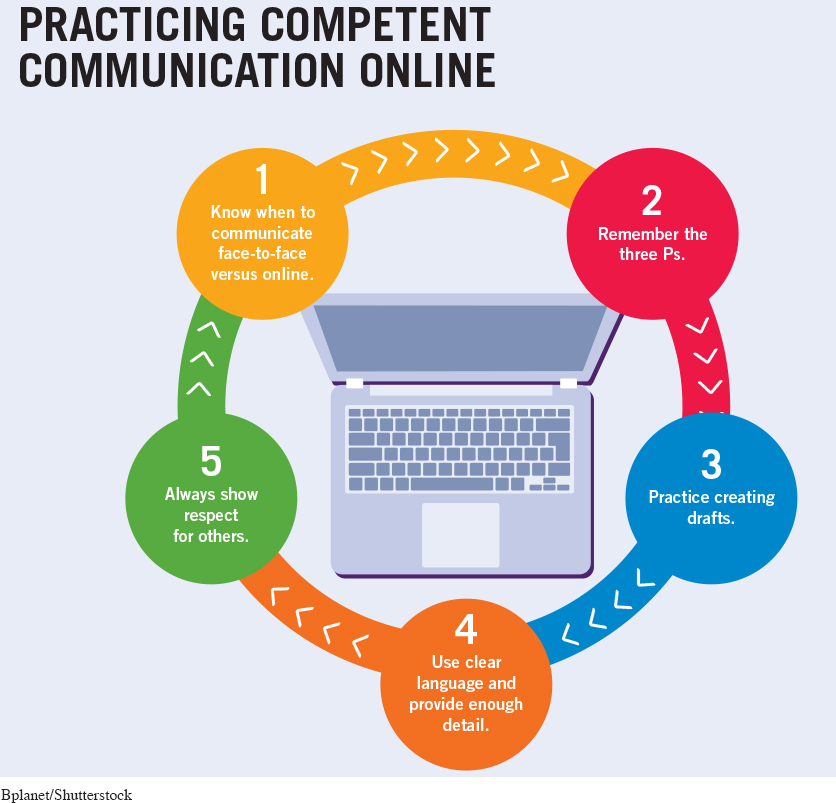3.5 Using Mediated Communication Competently
You probably spend a lot of time playing with the various features of a new phone or tablet, but it’s just as important to learn how to communicate competently using technology. Otherwise, you might make some missteps—
Among the news media that covered the Alpha Chi Omega selfie controversy was AZCentral.com, the premier online source for Arizona news and information. The Web site encourages readers to comment and discuss news stories posted on its site. But there’s one catch. You must use your Facebook account to post comments to AZCentral news stories. Why? Because the news staff wants to remove invisibility and discourage readers from posting flaming comments. And to prevent trolls from creating fake Facebook accounts, AZCentral requires readers to have a profile photo and at least four friends before comments are made visible on its site.
AZCentral, and other reputable news agencies, want to ensure that public commentary on news stories meets standards for online competence: that the posts are respectful and free of personal attacks. You can demonstrate competence when using social media by observing the following suggestions.3
3 Material for the first four points is published with permission of Dr. Malcolm Parks; it may not be reproduced without written consent of Dr. Parks and the authors.
Know when to use mediated communication versus face-
to- . In many situations, mediated communication is more time efficient than in-face person communication. For instance, messaging a friend to remind her of a coffee date makes more sense than dropping by her workplace, and it’s probably quicker and less disruptive than calling her. But mediated communication is not the best approach for giving in- depth and lengthy explanations, detailing problems, or conveying important decisions. This fact is intuitively known by young adults, who recognize that communicating through mobile devices is less personal and more likely to cause misunderstandings than communicating face- to- face (Pettegrew & Day, 2015). Since it isn’t practical (or necessary) to interact face-
to- face on every issue, consider these guidelines in determining the best medium for your message. First, consider the message itself. Handle emotional messages face- to- face. If this isn’t possible, use synchronous communication (a phone call or video chat) so that you can better monitor and respond to the other person’s reactions. With complex and difficult messages, consider using more than one medium. For example, hold a meeting to explain work policy changes and then follow up by e- mailing a summary of your main points or additional details to the meeting attendees. Second, consider the recipient of your message. Does he or she prefer certain means of communication? If so, adapt your format accordingly. For instance, your aunt may not respond to an Evite for a graduation party, but she will open an invitation she receives in the mail. Remember the three Ps. Always remember that mediated communication is powerful, public, and permanent. The things you say and do online endure. Old e-
mails, photographs, videos, messages, and blogs— all of these may still be accessible years after you first send them. Think before you post. Practice creating drafts. Because mediated communication makes it easy to flame, many of us impulsively fire off messages that we later regret. Instead, get into the habit of saving posts, texts, and e-
mail messages as drafts. Then revisit the drafts later and edit them as needed for appropriateness and effectiveness. You may be surprised at how a little time can give you perspective on a message. And don’t forget that sometimes the most competent mediated communication is none at all. If you are reviewing a draft and realize it’s only going to cause unnecessary damage, delete it. Page 82Use clear language and provide enough detail. Without feedback, people often misinterpret mediated messages. To avoid misunderstandings, try to use the clearest words possible. Avoid slang, jargon, and abbreviations unless you know the receiver will understand them and interpret them correctly. This is especially true when giving online presentations or participating in videoconference meetings, when it is important that your audience understand your messages clearly.
In addition, provide enough detail in your messages. In the rush of texting, we often resort to the simplest, shortest messages possible. Take a bit more time to provide enough detail so that the other person has some context for your message. If you text your spouse “home 2 hrs late,” he might wonder if something bad has happened. If your text says, “Still working. Be home 2 hrs late,” he can relax, knowing that you’re OK. For more on how to create understandable messages, see Chapter 5, pages 120–122.
 LearningCurve can help you review! Go to macmillanhighered.com/
LearningCurve can help you review! Go to macmillanhighered.com/
choicesconnections2ePage 83Always show respect for others. Empathy deficits can make it hard to communicate in sensitive, respectful ways. So when you’re communicating through social media, put extra energy into perspective-
taking , or seeing things from other people’s point of view, and empathic concern—becoming aware of how other people are feeling and experiencing compassion for them. As Chapter 2 explains (pp. 53–57), this will help you experience and express empathy for other people. Demonstrating kindness, caring, and concern in every form of mediated communication will go far to reduce tensions, build rapport, and create more positive outcomes in all your communication.

The convenience of mediated communication sometimes makes it easy to forget its specific challenges and the time it can take to use it competently. Before sending out your next quick text or multitasking between several apps, take a moment to be sure you are sending the message you intend.
